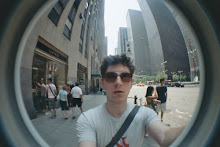So I've finally got it figured out with chlorination systems. First, these types of systems aren't sold on my website (www.drink-your-tap-water.com) but its still water treatment so applied here.
A) The application: Chlorine is used in water treatment all over the world. Most commonly, we add chlorine to municipal water supplies to kill bacteria, viruses and other microorganisms. Yup, bleach dumped right into the supply. Sounds unhealthy, but its better than the bacteria. There are ways to take out the residual chlorine if it bothers you. You can treat just your drinking water by installing a drinking water filtration system like the ones on my website. Each system has at least carbon filtration which removes the chlorine, and the cheapest one is http://www.drink-your-tap-water.com/ecdrwasy.html.
Okay, the other uses for chlorine are as an oxidizing agent. It oxidizes sulfur gas (rotten egg smell), ferrous iron (do you have iron stains on your porcelain, but your water runs clear), and manganese (is your dishwasher brown or inside of your toilet tank brown/black?) The oxidization chemically changes the contaminants so they can precipitate or be filtered out.
B) The System: You'd install a chlorination system at the water's "point of entry" into the home, usually in the basement after the pressure tank. The first part is the solution tank which holds the chlorine (usually diluted with water). The second part is the chemical feed pump which releases proportioned amounts of the mixture into the water. The third and most important part is the retention tank. The retention tank can be as large as 120 gallons (5 ft tall!) and is used to provide contact time with the water and chlorine mixture to ensure effectiveness. Finally, the fourth and optional stage is a carbon filter that removes the residual chlorine.
Thats it, good luck!
Subscribe to:
Post Comments (Atom)

No comments:
Post a Comment